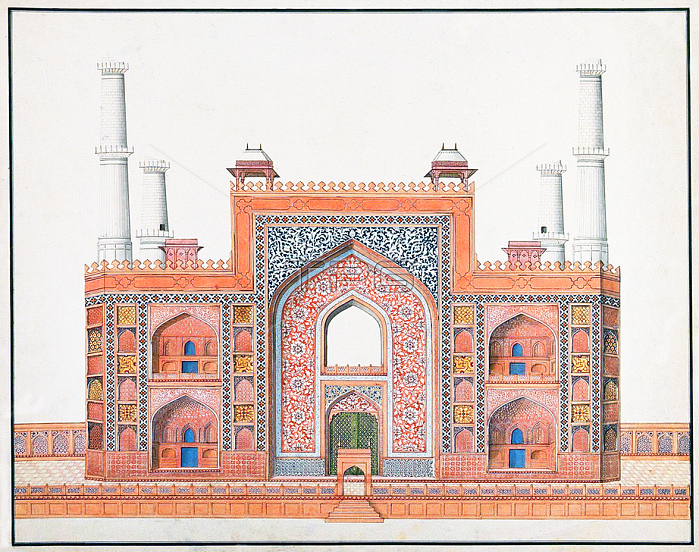
The Tomb of the the third Mughal Emperor Akbar (r. 1556-1605) is an important Mughal architectural masterpiece; built 1605-1613 and set in 48 Ha (119 acres) of grounds in Sikandra; a suburb of Agra; Uttar Pradesh; India.
Emperor Akbar himself commenced its construction around 1600; according to Central Asian tradition to commence the construction of one's tomb during one's lifetime. Akbar himself planned his own tomb and selected a suitable site for it; after his death; Akbar's son Jahangir completed the construction in 1605-1613.
The south gate is the largest; with four white marble chhatri-topped minarets which are similar to (and pre-date) those of the Taj Mahal; and is the normal point of entry to the tomb. The tomb itself is surrounded by a walled enclosure 105 m square. The tomb building is a four-tiered pyramid; surmounted by a marble pavilion containing the false tomb. The true tomb; as in other Mughal mausoleums; is in the basement.
The buildings are constructed mainly from a deep red sandstone; enriched with features in white marble. Decorated inlaid panels of these materials and a black slate adorn the tomb and the main gatehouse. Panel designs are geometric; floral and calligraphic; and prefigure the more complex and subtle designs later incorporated in Itmad-ud-Daulah's Tomb.
| px | px | dpi | = | cm | x | cm | = | MB |
Details
Creative#:
TOP20184188
Source:
達志影像
Authorization Type:
RM
Release Information:
須由TPG 完整授權
Model Release:
No
Property Release:
No
Right to Privacy:
No
Same folder images:

 Loading
Loading